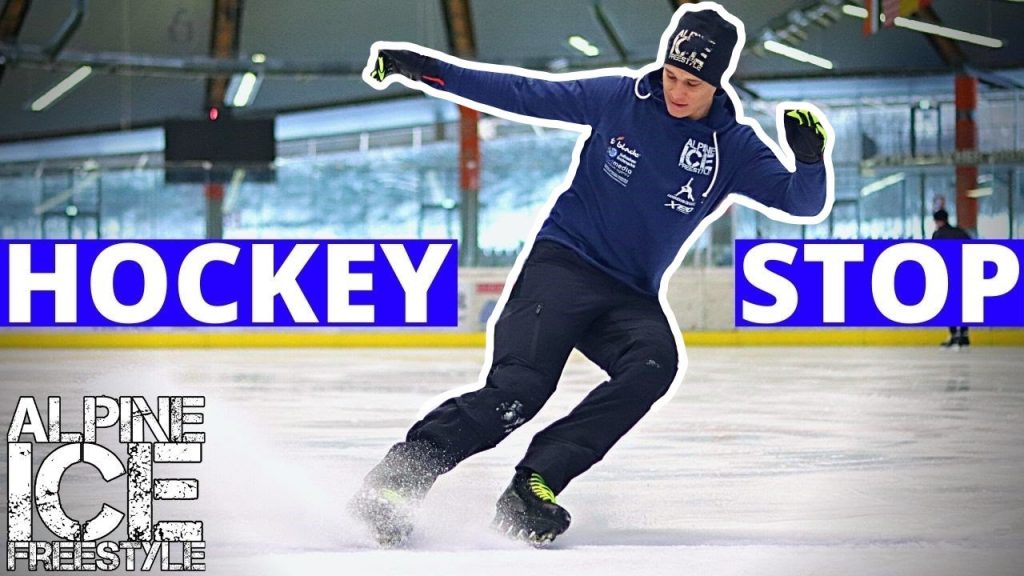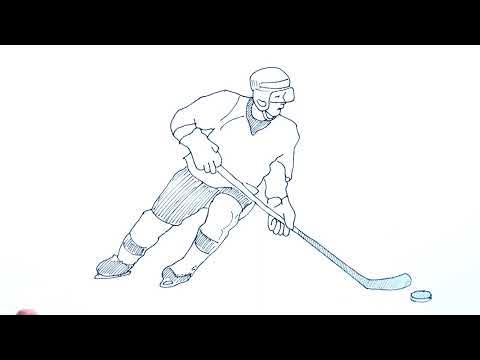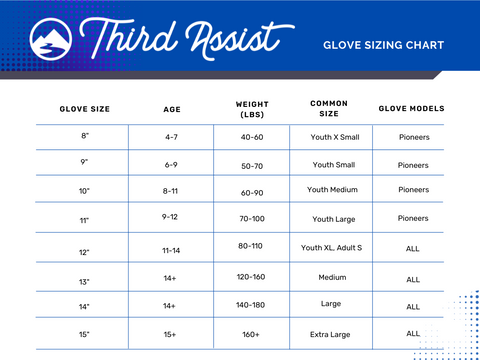Stopping on ice skates can be tricky. But learning how to hockey stop can change your game.
Hockey stops are essential for any ice skater. This skill lets you stop quickly and change direction fast. It’s not just for hockey players; figure skaters and casual skaters use it too. Mastering the hockey stop helps you gain better control on the ice.
You’ll feel more confident and safe. In this guide, you will learn the steps to perform a hockey stop like a pro. Whether you’re a beginner or looking to improve, this guide will help you get there. Let’s dive into the basics and get you stopping on a dime.
Introduction To Hockey Stop
Learning to hockey stop on ice skates can be a thrilling experience. This technique allows skaters to stop quickly and efficiently. It also adds a touch of style to your skating. Whether you are a beginner or an intermediate skater, mastering the hockey stop is essential. This section will guide you through the basics of this technique.
Importance Of Hockey Stop
The hockey stop is crucial for several reasons:
- Safety: It helps in avoiding collisions and injuries.
- Control: Provides better control over your movements.
- Efficiency: Allows you to stop quickly and save energy.
- Versatility: Useful in both hockey games and recreational skating.
Basic Principles
Understanding the basic principles of the hockey stop is key to mastering it:
- Speed Control: Approach the stop with a moderate speed.
- Body Position: Bend your knees slightly. Keep your back straight.
- Weight Distribution: Shift your weight to the balls of your feet.
- Skate Angle: Turn your skates at a 90-degree angle to the direction of travel.
- Edge Usage: Use the inside edges of your skates to dig into the ice.
By following these principles, you will improve your ability to hockey stop.

Credit: www.tiktok.com
Choosing The Right Skates
Choosing the right skates is crucial for a successful hockey stop. The right skates give you control and balance, making the stopping motion easier. Below, we will look at important aspects of skate fit and blade sharpness.
Skate Fit
A proper skate fit ensures comfort and control. Your skates should be snug but not too tight. Here’s a quick guide:
- Snug Fit: Your toes should slightly touch the end of the skate.
- Heel Lock: Your heel should stay in place with no lift.
- Width: Skates should be tight around the widest part of your feet.
If the skates are too loose, you will lack control. If too tight, they will be uncomfortable.
Blade Sharpness
Blade sharpness is vital for a clean hockey stop. Sharp blades grip the ice better, making stopping easier.
| Sharpness Level | Performance |
|---|---|
| Very Sharp | High control, suitable for experienced skaters. |
| Moderately Sharp | Balanced grip and glide, good for beginners. |
| Dull | Low control, not recommended for learning stops. |
Regularly check and sharpen your blades. Keep them at the right sharpness for your skill level.
Essential Gear
Learning how to hockey stop on ice skates can be thrilling. But ensuring you have the right gear is crucial for both performance and safety. Let’s dive into the essential gear you need.
Protective Equipment
Wearing a helmet is a must. It protects your head from falls. Knee pads and elbow pads are also important. They shield your joints from impact. Wrist guards can save you from wrist injuries. Hockey gloves protect your hands and offer a good grip. Don’t forget shin guards. They protect your legs from stray pucks and falls. Proper protective gear keeps you safe and confident.
Clothing Tips
Wear layers to stay warm on the ice. Start with a moisture-wicking base layer. It keeps sweat away from your body. Add an insulating layer for warmth. Finish with a waterproof outer layer. This keeps you dry. Choose clothing that allows movement. Tight clothes restrict your motion. Loose clothes can get caught. Wear comfortable socks. They should fit well and not bunch up. Proper clothing helps you move freely and stay comfortable.

Credit: www.youtube.com
Warm-up Exercises
Before you hit the ice for hockey stopping, warm-up exercises are essential. They prepare your muscles, improve your balance, and prevent injuries. Here are some effective warm-up exercises to get you ready.
Stretching Routines
Stretching is crucial to loosen your muscles. Start with basic leg stretches. Hold each stretch for 20 seconds. Quadriceps, hamstrings, and calves are key areas to focus on. Next, move to upper body stretches. Stretch your arms and shoulders. This helps in maintaining overall flexibility.
Balance Drills
Balance is vital for a successful hockey stop. Begin with simple one-leg stands. Hold for 30 seconds on each leg. Progress to more challenging drills. Try balancing on a wobble board or balance pad. These drills enhance your stability on ice. Practice shifting your weight from one leg to the other. This mimics the motion of a hockey stop.
Basic Stance
Learning the basic stance is crucial for mastering the hockey stop. A good stance provides balance and control. It helps you stop quickly and safely on the ice.
Knee Bend
Start with a deep knee bend. Bending your knees lowers your center of gravity. This gives you better balance. Your knees should be over your toes. Keep them slightly bent, not locked.
Check your posture. Your knees should form a 90-degree angle. This is similar to sitting on an invisible chair. This position helps you stay stable while stopping.
Body Position
Next, focus on your body position. Lean slightly forward. Your chest should be over your knees. This forward lean helps maintain balance.
Keep your back straight. Avoid hunching over. Your shoulders should be relaxed. This helps you stay agile and ready to move.
Extend your arms out slightly. This helps with balance. Imagine you are holding a tray. This position helps you stay steady on the ice.
| Key Element | Description |
|---|---|
| Knee Bend | Bend knees at 90 degrees for balance |
| Body Position | Lean forward, keep back straight, arms out |
Remember, practice these basic stances regularly. They form the foundation for a perfect hockey stop. Good luck on the ice!
Initiating The Stop
Learning to hockey stop on ice skates can be challenging for beginners. Initiating the stop is crucial. It involves proper weight transfer and edge control. These skills are essential for executing a smooth and effective stop.
Weight Transfer
Start by bending your knees slightly. This lowers your center of gravity. Shift your weight onto the ball of your foot. Avoid leaning too far forward or backward. Maintain a balanced posture. This helps you stay in control.
Next, begin to shift your weight to the inside edge of one skate. This will become your stopping foot. Practice this weight transfer slowly at first. It may feel awkward initially. Gradually, it will become more natural.
Edge Control
Edge control is vital for a successful hockey stop. You must use the inside edge of one skate and the outside edge of the other. This creates a braking force. Practice gliding on your edges first. Understand how each edge feels.
As you begin the stop, angle your skates slightly inward. This helps catch the ice. Apply pressure evenly on both edges. Your skates should create a snowplow effect. This will slow you down quickly.
Keep practicing edge control. It will improve your stopping technique. Remember, consistency is key. Regular practice will lead to smoother stops.
Perfecting The Slide
Perfecting the slide is crucial for executing a smooth hockey stop. It’s a skill that combines balance, precision, and control. Mastering the slide can help you stop quickly and safely, giving you an edge on the ice. This section will guide you through the essential techniques for perfecting your slide.
Foot Positioning
Proper foot positioning is key to a successful hockey stop. Begin by bending your knees slightly. This helps with balance. Place your dominant foot slightly ahead. Your non-dominant foot should be slightly behind. Ensure both feet are shoulder-width apart. This stance provides stability. Turn both feet inward, creating a “V” shape. This angle helps you dig into the ice for a controlled stop.
Speed Management
Managing your speed is essential for a smooth slide. Start by practicing at a moderate speed. Too fast, and you risk falling. Too slow, and the stop won’t be effective. As you gain confidence, gradually increase your speed. Always keep your knees bent. This lowers your center of gravity. It also helps you maintain control. Focus on making quick, sharp turns. This will help you stop quickly while maintaining balance.

Credit: www.wikihow.com
Common Mistakes
Learning to hockey stop on ice skates can be challenging. Many beginners make common mistakes that hinder their progress. Recognizing these errors can help you improve faster.
Losing Balance
One of the most frequent mistakes is losing balance. Skaters often shift their weight too far forward or backward. This causes falls or uncontrolled stops. To maintain balance, keep your knees bent. Your weight should be centered over your skates.
Another issue is leaning to one side. This happens when skaters are nervous. It leads to uneven stops. Practice standing straight with a slight forward tilt. This will help you stay balanced.
Incorrect Edge Use
Using the wrong edge of the blade is another common mistake. Skaters often use the inside edge only. This can cause the skate to dig into the ice too deeply. It’s essential to use both edges to get a smooth stop.
Start by practicing with the outside edge. This will help you get a feel for it. Then, combine both edges for a balanced stop. Remember, a good hockey stop uses both edges evenly.
- Maintain balance by keeping knees bent and weight centered.
- Avoid leaning to one side.
- Use both edges of the blade for smooth stops.
- Practice with the outside edge first.
| Common Mistake | Solution |
|---|---|
| Losing balance | Keep knees bent and weight centered |
| Leaning to one side | Stand straight with a slight forward tilt |
| Incorrect edge use | Use both edges of the blade |
Advanced Techniques
Mastering the basic hockey stop is a great achievement. But there are more advanced techniques to try. These techniques can help you become a better skater. They require more balance and control. Let’s explore some of these advanced techniques.
Backward Hockey Stop
The backward hockey stop is a challenging skill. Start by skating backward at a comfortable speed. Turn your hips and shoulders to the side. Place one skate behind the other. Drag the back skate to create friction and stop. Keep your knees bent for balance. Practice this move slowly at first. With time, you will gain confidence and speed.
One-footed Stop
The one-footed stop requires strong balance. Begin by skating forward. Shift your weight onto one foot. Lift the other foot slightly off the ice. Use the edge of your skate to stop. This move takes practice. Start slow and focus on your balance. As you improve, try stopping faster. This technique helps improve control and agility.
Practice Drills
Learning to hockey stop on ice skates can be challenging. Practice drills can help you improve your technique and build confidence. Both on-ice drills and off-ice training are essential for mastering the hockey stop. Below, we dive into specific drills that will take your skills to the next level.
On-ice Drills
Practicing on the ice is crucial. Here are some effective on-ice drills:
- One-Foot Stops: Start by stopping on one foot. This helps you feel the ice and improve balance. Glide on one skate, then apply pressure to the inside edge to stop.
- Parallel Stops: Use both skates to stop. Glide forward, then turn both skates sideways. Apply equal pressure to both inside edges.
- Figure Eights: Skate in a figure-eight pattern. Practice stopping at each curve. This helps you learn to stop from different angles.
- Speed Stops: Build up speed before stopping. This simulates game conditions. Increase your speed gradually as you improve.
Off-ice Training
Off-ice training can improve your strength and balance. Here are some helpful exercises:
- Squats: Squats strengthen your legs. Strong legs are essential for a powerful hockey stop. Aim for three sets of 15 repetitions.
- Balance Drills: Use a balance board or a simple pillow. Stand on one foot and maintain your balance. Switch feet and repeat.
- Jumping Lunges: These improve your explosiveness. Perform three sets of 10 repetitions on each leg. Jump from one lunge to the next.
- Core Workouts: A strong core helps with stability. Try planks or Russian twists. Aim for three sets of 30 seconds for planks and 15 repetitions for twists.
Safety Tips
Learning to hockey stop on ice skates can be exciting. But safety is crucial. Follow these safety tips to prevent injuries and practice in a safe environment.
Avoiding Injuries
Proper gear is essential. Wear a helmet, gloves, and knee pads. This reduces the risk of injuries. Always warm up before hitting the ice. Stretch your muscles to avoid strains. Keep your knees bent while skating. This helps in maintaining balance and control.
Safe Practice Environments
Choose a well-maintained rink. Avoid crowded places. Practice during off-peak hours. This provides more space and fewer distractions. Ensure the ice surface is smooth. Avoid areas with cracks or bumps. Good lighting is also important. It helps you see clearly and avoid obstacles.
Frequently Asked Questions
How Do You Practice Hockey Stopping?
To practice hockey stopping, start by skating at a moderate speed. Shift your weight to one foot and use the other to create friction. Practice on both sides for balance.
What Are The Key Steps To Hockey Stop?
The key steps are: get into a low stance, turn your skates perpendicular, and apply pressure to the edge. Practice these steps repeatedly.
Why Is Hockey Stopping Important?
Hockey stopping is crucial for quick direction changes and control. It improves your agility and safety on the ice.
How Long Does It Take To Learn Hockey Stop?
Learning to hockey stop can take a few weeks of consistent practice. Progress depends on your dedication and existing skating skills.
Conclusion
Learning to hockey stop on ice skates boosts your confidence. Practice makes perfect. Keep at it. Start slow, then progress. Always remember to stay balanced. Safety first. Wear proper gear. Follow the steps shared. Soon, you’ll stop with ease. Enjoy your time on the ice.
Happy skating!



